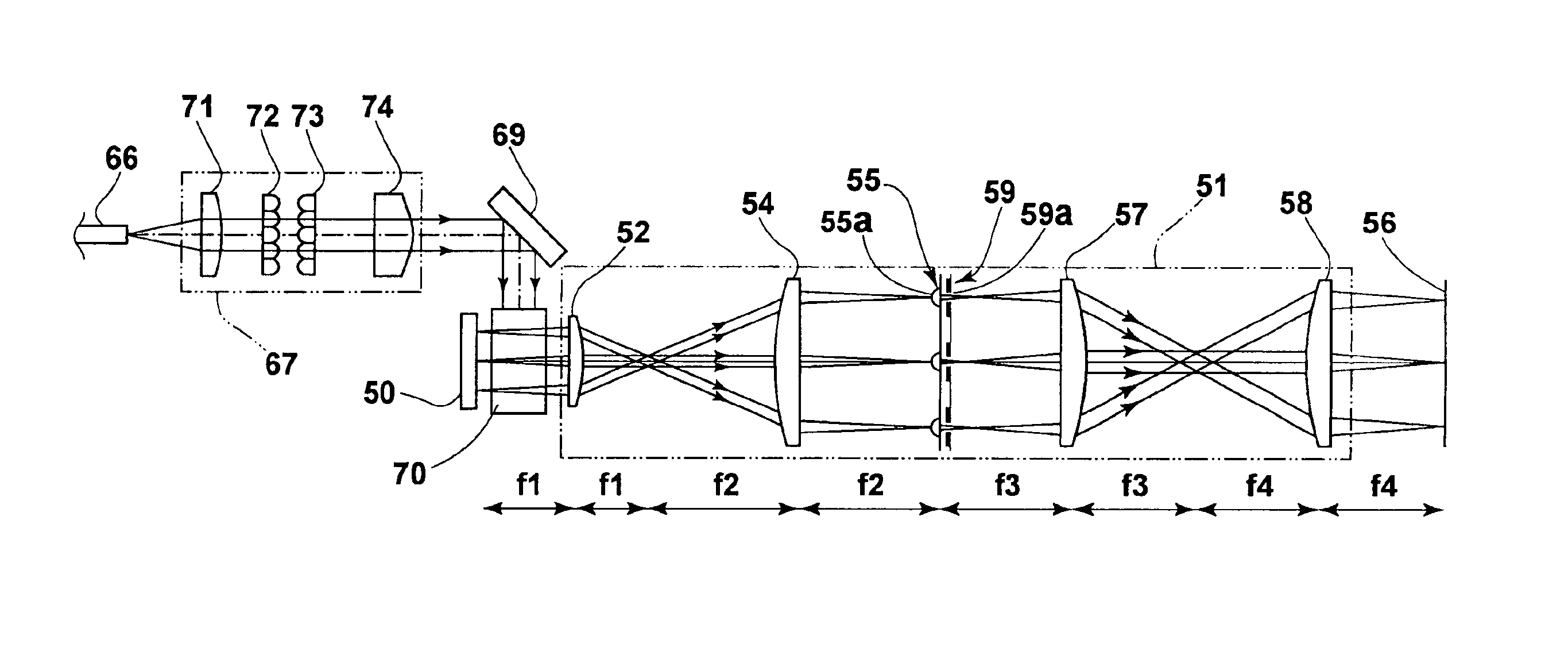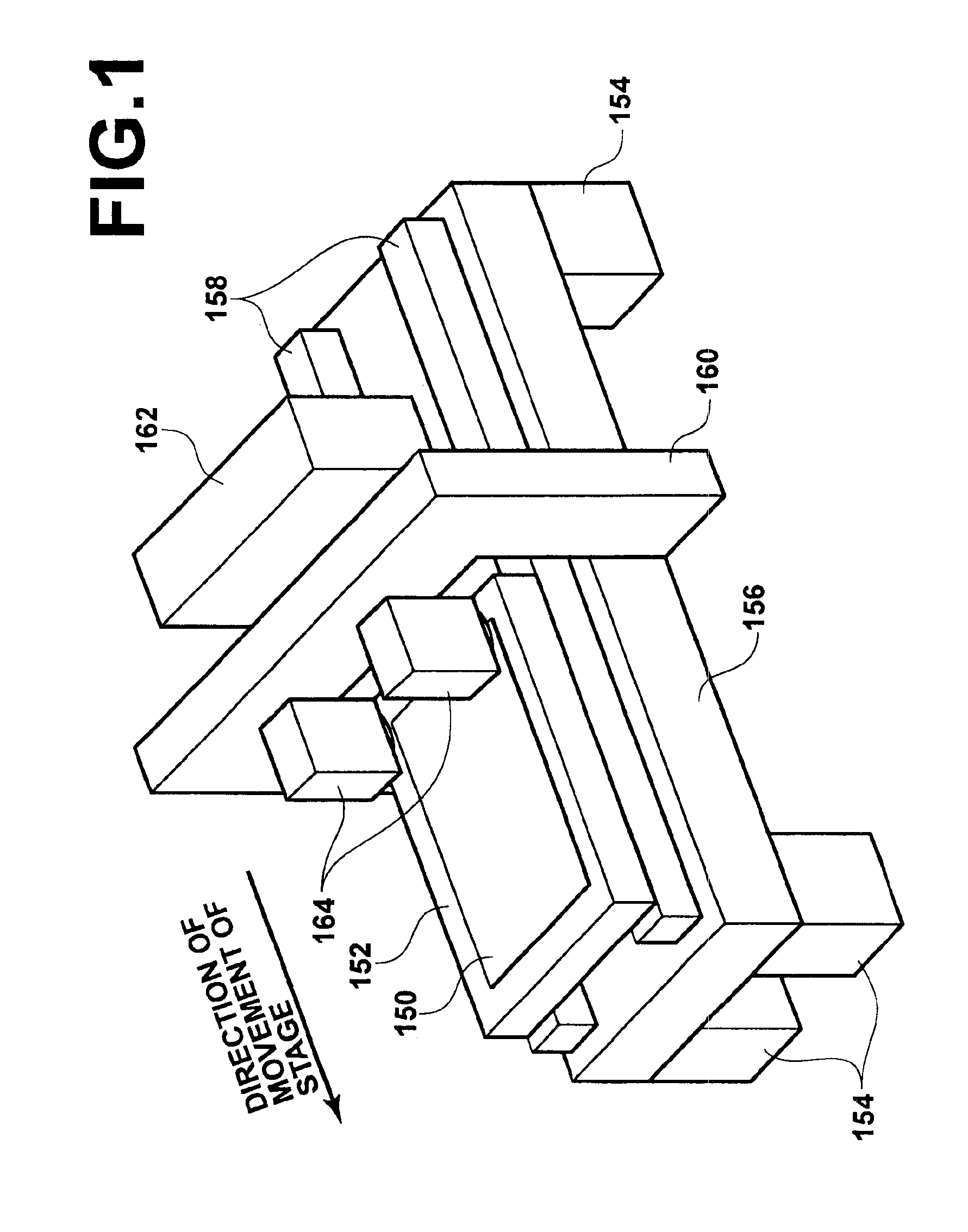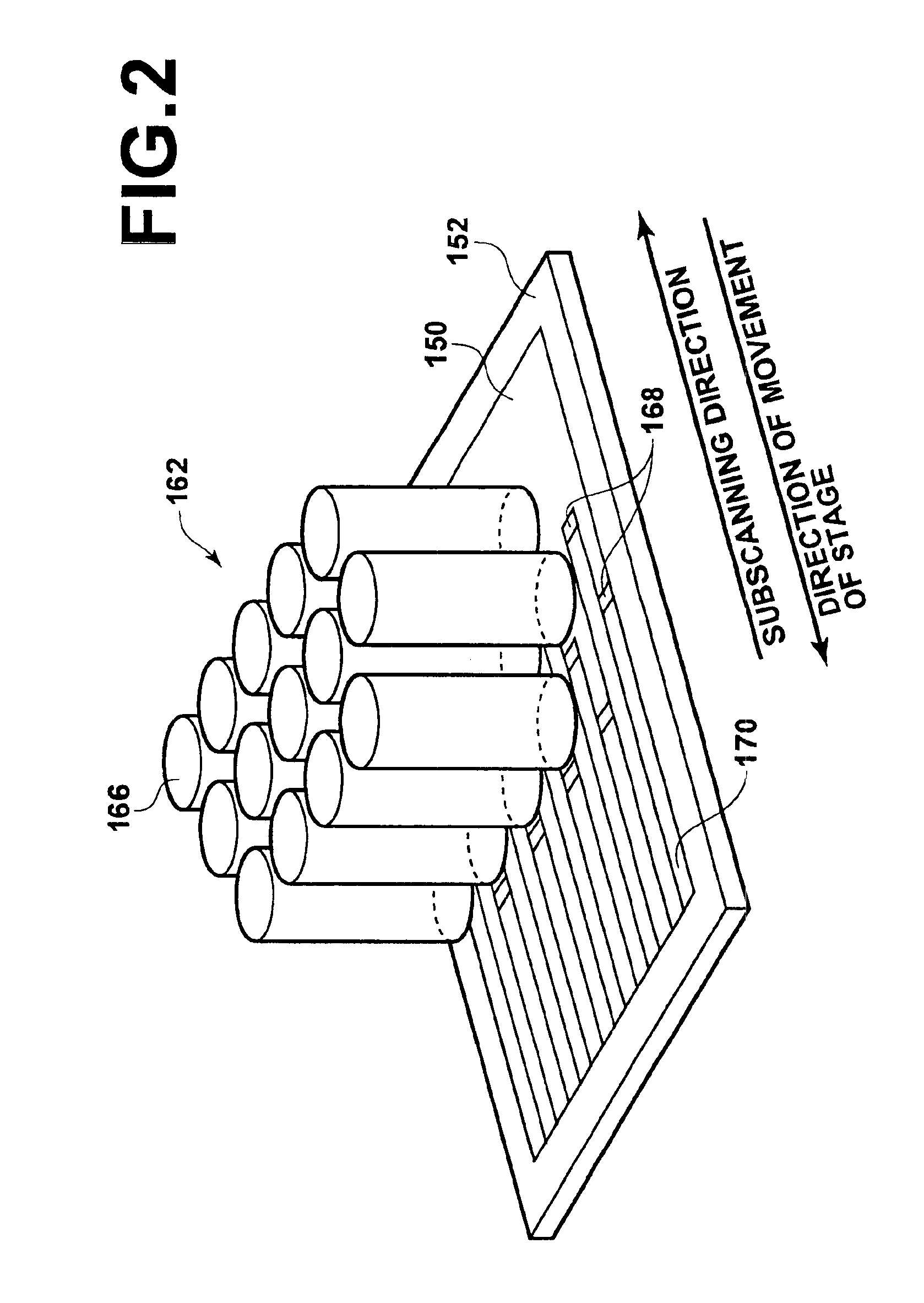Imaging forming apparatus
a technology of image forming apparatus and forming apparatus, which is applied in the direction of lighting and heating apparatus, printing, instruments, etc., can solve the problems of difficult design of such optical systems, deterioration of extinction ratio of entire image-forming optical systems, and inability to meet the requirements of magnification power, so as to facilitate the design of magnified-image-forming optical systems. , to prevent the effect of deterioration of extinction ratio
- Summary
- Abstract
- Description
- Claims
- Application Information
AI Technical Summary
Benefits of technology
Problems solved by technology
Method used
Image
Examples
first embodiment
Operations of First Embodiment
Operations of the above image exposure apparatus according to the first embodiment are explained below.
In each of the exposure heads 166 in the scanner 162, divergent laser beams B1 through B7 emitted from the GaN-based laser-diode chips LD1 through LD7 in each of the optically-multiplexing laser-light sources 64 (constituting the fiber-array light source 66) are respectively collimated by the corresponding collimator lenses 11 through 17. The collimated laser beams B1 through B7 are collected by the condensing lens 20 so as to converge on the light-entrance end face of the core 30a of the aforementioned multimode optical fiber 30 in the optically-multiplexing laser-light source. In this example, an optical condensing system is constituted by the collimator lenses 11 through 17 and the condensing lens 20, and an optical multiplex system is constituted by the optical condensing system and the multimode optical fiber 30. Thus, the laser beams B1 through B...
second embodiment
The second embodiment of the present invention is explained below with reference to FIG. 22, which is a schematic side view of an assembly of a microlens array and an aperture array in the second embodiment of the present invention. In FIG. 22, elements which are equivalent to corresponding elements in FIG. 19 are denoted by the same reference numerals as the corresponding elements in FIG. 19, and the explanations on the equivalent elements are not repeated here.
In the construction of FIG. 22, a substrate portion 59b′ of an aperture array 59′ has a simple planar shape. The other portions of the aperture array 59′ are identical to the corresponding portions of the aperture array 59 in FIG. 19. The aperture array 59′ and a microlens array 55 are combined through a spacer 61 having a predetermined thickness H′.
When the spacer 61 in the above construction is manufactured so as to have an appropriate thickness as designed, it is possible to precisely set the relative position between the...
PUM
| Property | Measurement | Unit |
|---|---|---|
| flatness | aaaaa | aaaaa |
| focal lengths | aaaaa | aaaaa |
| focal length | aaaaa | aaaaa |
Abstract
Description
Claims
Application Information
 Login to View More
Login to View More - R&D
- Intellectual Property
- Life Sciences
- Materials
- Tech Scout
- Unparalleled Data Quality
- Higher Quality Content
- 60% Fewer Hallucinations
Browse by: Latest US Patents, China's latest patents, Technical Efficacy Thesaurus, Application Domain, Technology Topic, Popular Technical Reports.
© 2025 PatSnap. All rights reserved.Legal|Privacy policy|Modern Slavery Act Transparency Statement|Sitemap|About US| Contact US: help@patsnap.com



